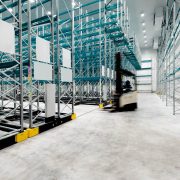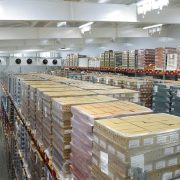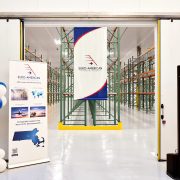The life sciences industry is being shaped by technological advancements, regulatory changes, and evolving market conditions. Here are the top-5 factors influencing the sector:
1. Finding Capital Investment
Securing capital remains a critical challenge for life sciences companies, especially startups and early-stage ventures, due to market volatility and regulatory uncertainties. Despite this, there is still significant interest in innovative technologies and therapies, particularly those addressing unmet medical needs or leveraging cutting-edge science.
In the first quarter of 2024, biotechnology and pharmaceutical companies raised $5.9 billion across 209 rounds, an increase from the 2023 quarterly average but spread across fewer deals. This marks the lowest deal count since the third quarter of 2018. Investors remain risk-averse, prioritizing companies with drug candidates farther along in development.
Successful startups that raised large venture rounds share common traits, such as experienced management teams and clinically validated science. For example, Mirador Therapeutics secured $400 million due to its founders’ successful track record, and FogPharma raised $145 million with leadership from industry veterans.
However, this trend may disadvantage highly innovative early-stage programs, which could lead to a loss of biotech’s innovative edge. Despite this, significant capital remains available, and investors face pressure to deploy funds before they must return them. Pharmaceutical companies also have substantial capital for mergers and acquisitions, driven by the need to compensate for revenue losses from expiring patents.
Ultimately, while current conditions are challenging, the need for investment and acquisition could lead to more favorable conditions for biotech startups soon.
2. Artificial Intelligence (AI)
Artificial Intelligence (AI) is revolutionizing the life sciences industry by optimizing drug discovery, improving clinical trial processes, and facilitating personalized medicine. AI algorithms can efficiently analyze large datasets to identify potential drug candidates faster and more accurately than traditional methods. Predictive analytics driven by AI enhance patient outcomes by tailoring treatments to individual genetic profiles. Major companies like Google’s DeepMind and IBM Watson are at the forefront of these innovations. AI’s potential economic impact on pharmaceutical and medical technology companies could exceed $100 billion annually.
As biopharma faces increasing competition, changing patient expectations, and complex market dynamics, generative AI offers disruptive capabilities in marketing and sales. It can generate customized content and insights, automate customer interactions, and revolutionize healthcare communications.
In a groundbreaking development, Xaira Therapeutics launched with $1 billion in funding, backed by Arch Venture Partners and Foresite Labs (source: Fierce Biotech). Led by Marc Tessier-Lavigne, former chief scientific officer at Genentech, the company aims to integrate machine learning, data generation, and therapeutic product development to create a drug discovery platform. Co-founded by David Baker of the University of Washington, Xaira will leverage advanced models for protein and antibody design. The team includes experts from Illumina and Interline Therapeutics, bringing together a wealth of multidisciplinary talent to transform drug discovery and clinical development.
Tessier-Lavigne, who recently resigned as president of Stanford University, emphasized the potential of AI to revolutionize medicine. The leadership team also includes Hetu Kamisetty, formerly of Meta, and Arvind Rajpal from Genentech, with an advisory board featuring industry luminaries like Scott Gottlieb, Carolyn Bertozzi, and Alex Gorsky.
3. BioSecure Act
The BioSecure Act, under consideration in Congress, aims to restrict federal contracts with biotechnology firms linked to adversarial nations like China, Russia, Iran, and North Korea to secure the U.S. biotech supply chain and prevent espionage. This could impact pharmaceutical and biotech companies, especially those with international collaborations.
The Act, supported by the House Committee on Oversight and Accountability, would ban federal agencies from procuring equipment or services from specific foreign biotech firms and restrict related federal loans and grants. However, this might limit U.S. access to essential drugs, so Congress should focus on bolstering domestic pharmaceutical and active pharmaceutical ingredient (API) production to avoid drug shortages and reduce reliance on foreign sources.
Currently, the U.S. heavily relies on imports for its top generic medications, primarily from China and India, which poses a supply chain risk. Quality control issues in Indian pharmaceutical manufacturing further complicate this reliance. Notably, many U.S. manufacturers depend on WuXi Biologics, a major Chinese biotech firm, for essential services and products. Disrupting this relationship could severely impact drug development and availability, highlighting the need for careful consideration of the Act’s implications.
To ensure a secure drug supply, Congress needs to strengthen domestic production before implementing the BioSecure Act’s restrictions. Without these preparations, the Act could exacerbate drug shortages and disrupt critical pharmaceutical supply chains, causing significant harm to U.S. healthcare.
4. Inflation Reduction Act (IRA)
The Inflation Reduction Act (IRA) poses a significant threat to the U.S. life science manufacturing industry, particularly drug development. Historically, the partnership between public institutions like the NIH and private biotech firms has driven American leadership in this field. The U.S. investment in biomedical R&D in 2020 was $245 billion, with the private sector contributing 66%.
Critics argue that NIH-funded drug research should lead to lower drug prices, but private sector investments and risks far exceed public contributions. The IRA’s price controls could stifle innovation, especially for orphan drugs treating rare diseases, by limiting their pricing exemptions to a single indication. This discourages broader research and applications.
Legislative efforts are needed to amend the IRA’s problematic aspects to prevent hampering the biotech industry’s innovation ecosystem. The Centers for Medicare and Medicaid Services (CMS) are also urged to reconsider the IRA’s impact, particularly on orphan drug exclusions.
The IRA aims to reduce out-of-pocket costs for seniors but inadvertently affects drug development. It mandates government-set prices for Medicare-covered drugs, starting seven years after FDA approval for small molecules and eleven years for biologics. This discourages continued R&D post-approval, as the market-based pricing period is significantly shortened.
Biopharmaceutical companies are reconsidering their R&D investments due to the IRA, with many cutting projects or reallocating resources. The law also discourages the development of small molecule medicines, which are often more convenient for patients, by setting prices earlier than generic competition typically arises.
Post-approval R&D, crucial for discovering new indications for existing drugs, is also jeopardized. Companies may halt clinical trials early due to the uncertainty of future price settings. Policymakers must focus on preserving innovation and ensuring access to life-saving treatments while addressing insurance and PBM practices to lower out-of-pocket costs for patients.
5. Material Shortages and Long Lead Times
Life science engineers face significant challenges due to material shortages and long lead times, impacting their ability to maintain production schedules and meet deadlines. Key materials in short supply include:
Single-use Systems and Consumables: Shortages of single-use bags, filters, and other consumables, essential for maintaining sterile environments in biopharmaceutical manufacturing, have been exacerbated by the increased demand for biologics and vaccines (Deloitte United States) (Life Science Leader).
Cell Culture Media: Essential raw materials for cell culture media, such as amino acids, vitamins, and growth factors, are experiencing long lead times, affecting the production of therapeutic proteins and cell therapies (Life Science Leader).
Microchips and Electronic Components: The global semiconductor shortage has delayed the availability of critical components for advanced bioprocessing equipment and laboratory instruments, hindering manufacturing and maintenance efforts (Medical Product Outsourcing).
To address these supply chain challenges, life science manufacturers are focusing on stockpiling critical raw materials and single-use components. Forming strategic partnerships with local third-party GMP-compliant warehouse providers to supplement their materials management. This approach ensures that essential materials are readily available, mitigating the risks of supply chain disruptions and supporting continuous manufacturing processes without delays. Stockpiling acts as a crucial buffer, allowing manufacturers to maintain production despite supply interruptions, demand fluctuations, and logistical hurdles.
Partnering with local third-party satellite facilities offers several advantages. These warehouses, located near manufacturing sites, ensure reliable access to materials and free up internal space for production. The flexibility of these partnerships allows manufacturers to adjust their storage space commitments based on current needs, providing operational and cost efficiency. This scalability means storage capacity can be expanded to accommodate new client opportunities or reduced during slower periods.
This combination of stockpiling and local partnerships ensures continuous manufacturing, customer satisfaction, and regulatory compliance, enabling manufacturers to respond swiftly to market demands and secure new opportunities.
Conclusion
These five factors will remain at the forefront of the life sciences industry throughout 2024. The industry faces challenges in securing capital investment and navigating regulatory changes like the BioSecure Act and Inflation Reduction Act, which impact innovation and international collaborations. Artificial Intelligence is driving advancements in drug discovery and personalized medicine. Material shortages and long lead times require strategic measures, such as stockpiling and local partnerships, to ensure continuous production. Traversing these challenges will be imperative for the industry in order to continue delivering critical medical advancements and improving health outcomes.










